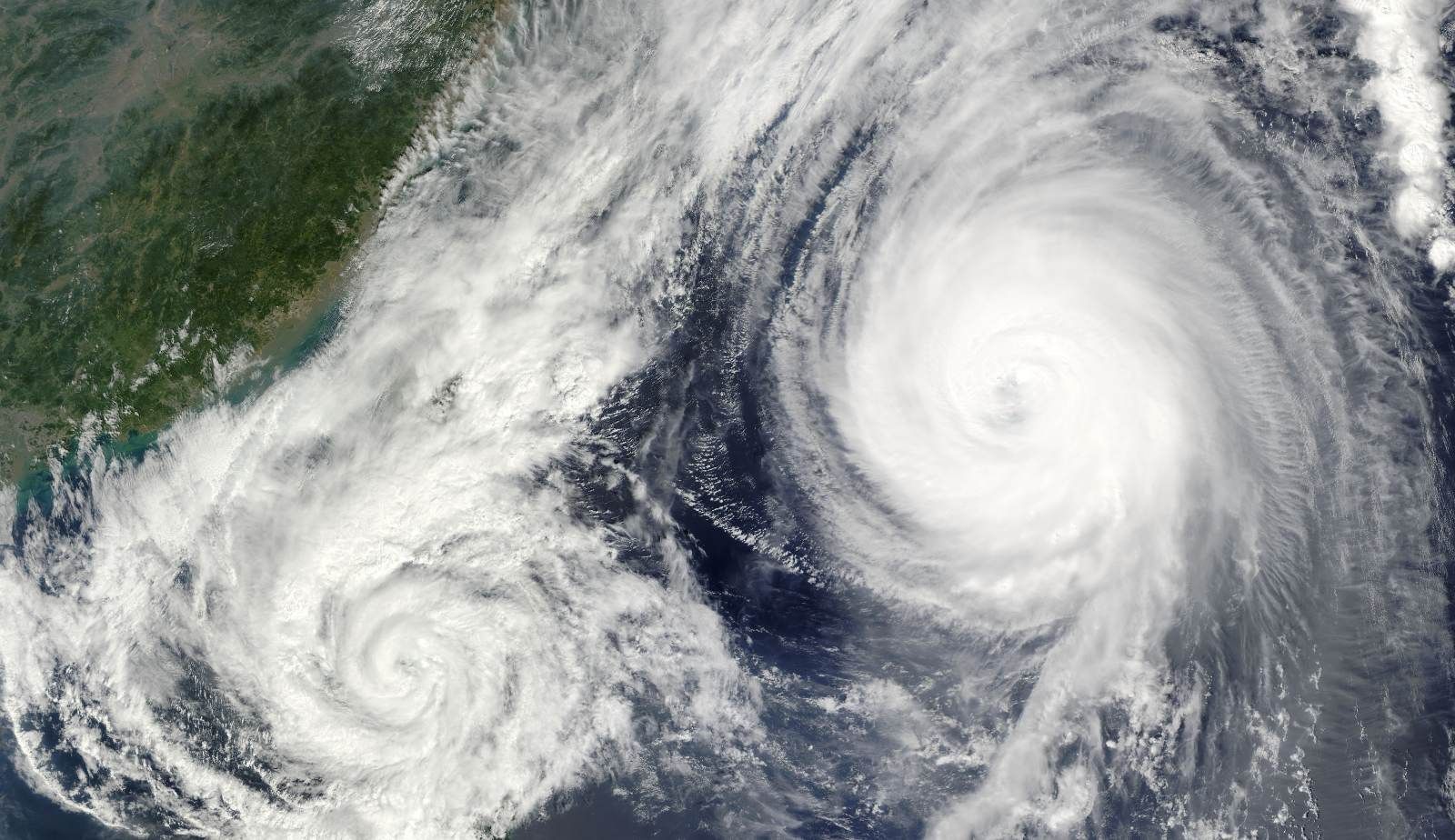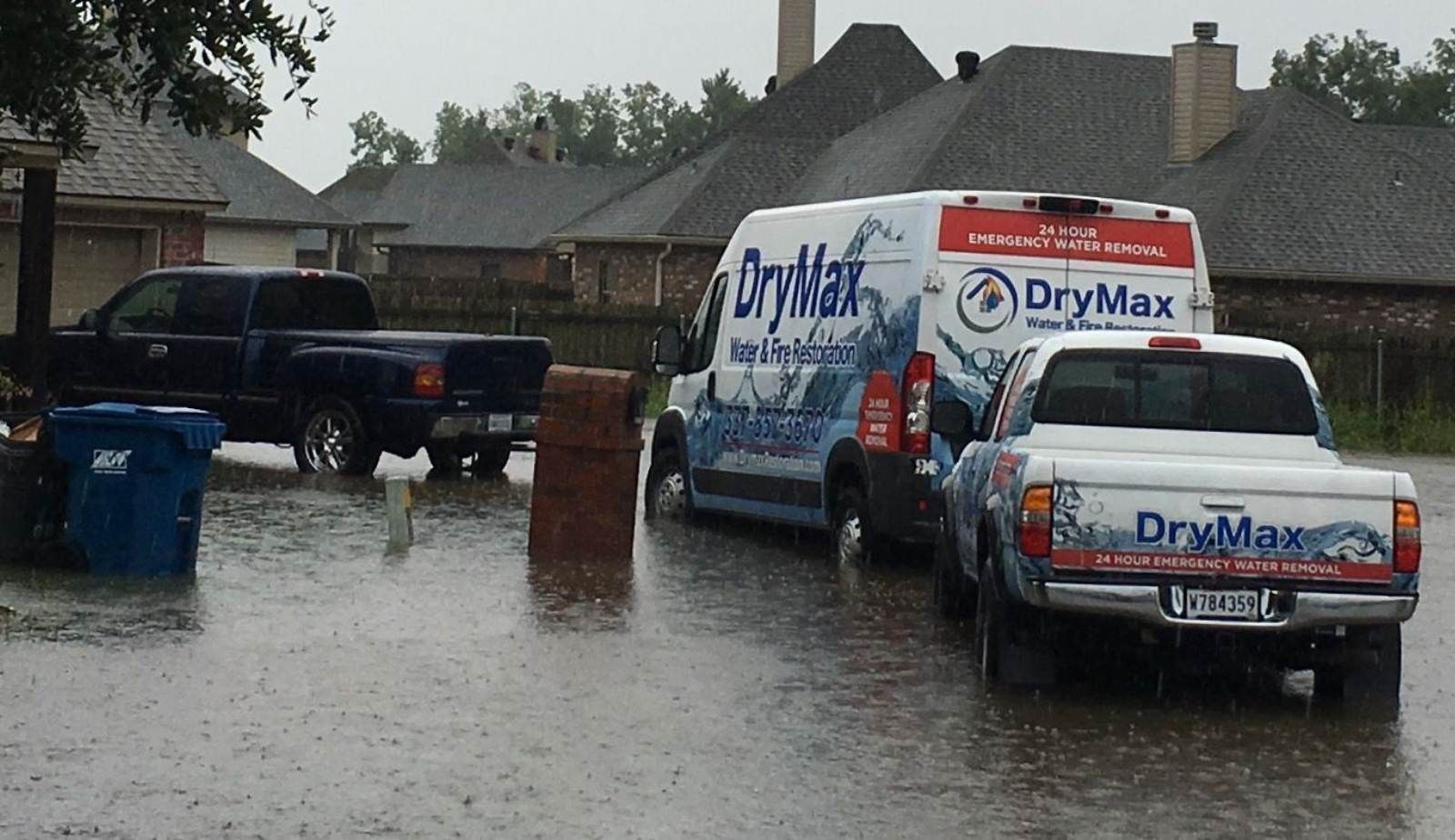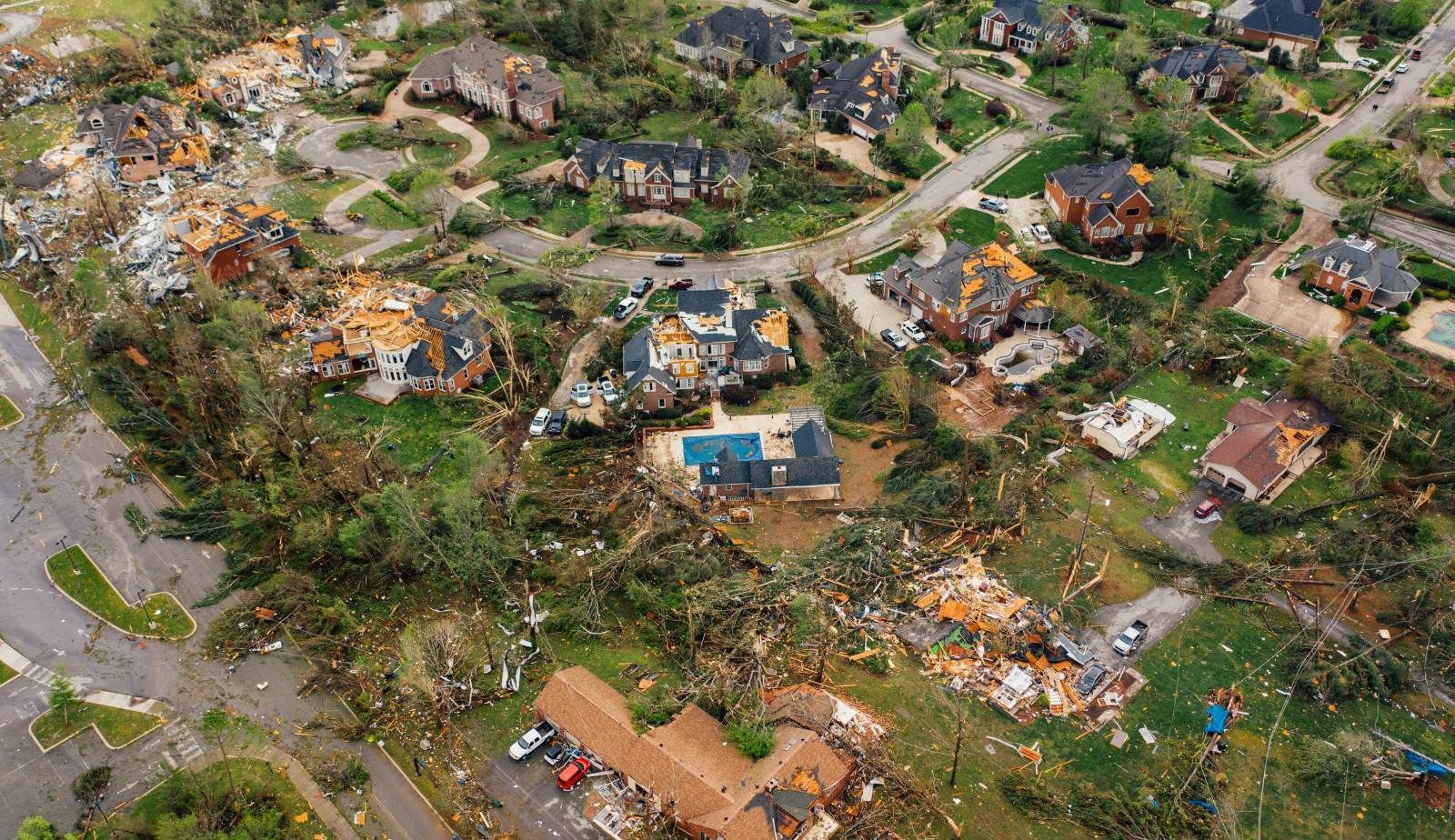Is Your Louisiana Home Ready for Hurricane Season? Drymax Advice for Homeowners
As hurricane season approaches, homeowners in Louisiana must assess their preparedness for potentially severe weather events. A proactive approach can significantly reduce damage and enhance safety during storms. It is essential for residents to review their emergency plans, secure their property, and ensure they have necessary supplies at the ready.
Knowing that hurricanes can impact the region with high winds, flooding, and power outages, it's crucial to take actionable steps to protect one's home. This includes checking insurance coverage, reinforcing structures, and being aware of evacuation routes. Following expert advice, like that from Drymax, can make a difference in how well a home withstands the challenges of hurricane season.
The changing climate patterns suggest that storms may become more intense, making careful preparation even more critical. Engaging in thorough planning now will provide homeowners with peace of mind as they face the Atlantic storms that frequent their area each year.
Assessing Hurricane Risks for Louisiana Homes
Evaluating hurricane risks is crucial for homeowners in Louisiana, given the state's vulnerability to powerful storms. Understanding the categories of hurricanes and analyzing past storm activity can help homeowners make informed decisions about preparing their properties.
Understanding Hurricane Categories and Damage Potential
Hurricanes are classified using the Saffir-Simpson Hurricane Wind Scale, which ranges from Category 1 to Category 5. Each category indicates the potential wind speed and associated damage:
- Category 1: Winds of 74-95 mph; minimal damage primarily to unanchored mobile homes and trees.
- Category 2: Winds of 96-110 mph; significant roof damage and possible power outages.
- Category 3: Winds of 111-129 mph; devastating damage occurs to homes, with most trees uprooted.
- Category 4: Winds of 130-156 mph; severe damage; most of the area will be uninhabitable for weeks or months.
- Category 5: Winds exceeding 157 mph; catastrophic damage; total destruction of many buildings.
Knowing the specific category risks helps homeowners implement appropriate precautionary measures and insurance coverage.
Historical Hurricane Activity in Louisiana
Louisiana has a long history of severe hurricanes affecting its residents. Notable storms include Hurricane Katrina in 2005 and Hurricane Ida in 2021. The impacts of these hurricanes involved widespread flooding, power outages, and massive property damage.
From June 1 to November 30, Louisiana faces the heightened risk of hurricanes. Homeowners should assess their properties based on historical data, considering factors such as:
- Proximity to water bodies
- Elevation levels
- The sturdiness of home construction
Researching local history and patterns can guide residents in making proactive decisions concerning hurricane preparedness and safety. Understanding past events allows for better future planning.
Insurance Coverage Essentials for Hurricane Season
For homeowners in Louisiana, preparing for hurricane season includes a thorough examination of insurance coverage. Adequate protection against storm damage is essential for safeguarding homes and financial stability.
Reviewing Homeowners Insurance Policies
Homeowners in Louisiana should carefully evaluate their homeowners insurance policies before hurricane season. Policies typically cover damage from wind and debris, but many do not include flooding, which is a significant risk during hurricanes.
Key considerations include:
- Coverage for Additional Structures: Ensure that structures like garages and sheds are included.
- Personal Property Protection: Check if personal belongings, such as furniture and electronics, are adequately covered.
It's advisable to consult with an insurance agent to verify policy details and make any necessary adjustments. This proactive approach can prevent unpleasant surprises in the event of a storm.
Flood Insurance Considerations
Flood insurance is often separate from standard homeowners policies. It is vital for homeowners in Louisiana to secure additional flood coverage given the state's vulnerability to heavy rains and storm surges.
Important facts to know include:
- Policy Activation: There is typically a 30-day waiting period for flood insurance.
- National Flood Insurance Program (NFIP): Homeowners can obtain flood insurance through the NFIP, which may offer subsidized rates.
Understanding the specifics of flood insurance coverage, including what perils are covered, is critical to comprehensive protection.
Understanding Deductibles and Coverage Limits
Homeowners should also familiarize themselves with policy deductibles and coverage limits. Deductibles determine how much out-of-pocket expense is needed before the insurance coverage begins.
Consider these factors:
- Higher Deductibles: Choosing a higher deductible can lower monthly premiums but increases costs during a claim.
- Coverage Limits: Know the maximum amount the insurer will pay for damages. It is essential to ensure these limits meet the potential costs of hurricane-related damages.
Reviewing and adjusting deductibles and limits can tailor coverage to individual financial situations and risk exposures. This step is critical for adequate hurricane preparedness.

Exterior Preparation: Strengthening Roofs, Gutters, and Siding
Proper preparation of a home’s exterior is essential for hurricane resilience. This includes inspecting roofs, maintaining gutters, and ensuring siding is capable of withstanding severe weather conditions.
Inspecting and Reinforcing Roofing
Inspecting the roof is a critical first step in hurricane preparedness. It is advisable to check for loose or damaged shingles, as these can become projectiles in high winds. Homeowners should replace any compromised shingles and consider installing wind-resistant roofing options.
Reinforcing the roof structure is another effective measure. Using screws instead of nails for shingle attachment enhances stability. Additionally, strengthening the roof-to-wall connections can prevent lifting during storms. Regular inspections before hurricane season are essential to ensure that roofing materials remain intact and functional.
Maintaining Gutters and Downspouts
Gutters and downspouts play a vital role in redirecting rainwater away from the foundation. During hurricane season, clogged gutters can lead to water damage. Homeowners should clean gutters regularly to remove debris and ensure free flow.
Downspouts should direct water at least three to four feet away from the home’s foundation. Installing gutter guards can provide an extra layer of protection against debris accumulation, making maintenance easier. Regular checks before and during the storm season help maintain optimal performance.
Vinyl Siding and Storm Resistance
Vinyl siding is a popular choice for homes in Louisiana due to its durability and low maintenance. However, it must be properly installed to maximize storm resistance. Homeowners should check that siding panels are securely fastened and that seams are properly sealed to prevent water infiltration.
In hurricane-prone areas, choosing thicker vinyl siding can provide additional strength against strong winds. Regular inspections for cracks or warping will also help maintain its protective properties. Investing in quality siding can greatly enhance the home's ability to withstand adverse weather conditions.
Securing Windows and Doors Against Storm Damage
Properly securing windows and doors is essential for protecting a Louisiana home from hurricane-related damage. Impact-resistant solutions and reinforcements can significantly reduce risks associated with high winds and debris.
Choosing Impact-Resistant Windows
Impact-resistant windows provide a vital defense against storm damage. These windows typically feature double layers of glass sandwiching a durable interlayer. This structure prevents shattering, effectively keeping both wind and water out.
Homeowners should look for windows certified by the American Society for Testing and Materials (ASTM) to ensure they meet performance standards. It is also advisable to select windows that enhance energy efficiency while providing storm protection.
When replacing standard windows, homeowners may benefit from consultation with professionals to assess local building codes and specific needs for every installation.
Installing Storm Shutters
Storm shutters are another effective way to secure windows during hurricane season. They come in various styles, including accordion, roll-down, and colonial, each providing effective barriers against storms.
Homeowners should select storm shutters based on window size, type, and ease of access during storms. While some models can be permanently installed, others may need to be mounted just before a storm approaches.
Proper installation is crucial. Shutters should be securely fastened to withstand strong winds and should meet local regulations. Regular maintenance of these shutters ensures they remain functional when needed.
Reinforcing Doors and Entry Points
Doors require robust reinforcement to withstand the pressures of severe weather. Homeowners should consider installing solid core doors or impact-rated doors specifically designed for storm resistance.
Adding deadbolts can bolster security, and utilizing reinforced door frames can help prevent breaches in case of high winds. Homeowners should also ensure that patio doors and other entry points have proper sealing mechanisms to prevent water intrusion.
Regular inspections for wear and tear are necessary. Maintaining weather stripping and hinges can extend the lifespan of doors, ensuring they are effective when storms occur.
Landscape and Outdoor Safety Precautions
Proper care and preparation of landscaping and outdoor areas are essential for minimizing damage during hurricane season. This involves managing trees and yard debris, securing outdoor structures, and protecting vehicles and equipment.
Managing Trees and Yard Debris
Maintaining the health of trees is crucial. Weak or dead branches should be pruned to prevent them from breaking and causing harm during storms. Homeowners should inspect trees for leaning or root damage, which can signal instability.
Additionally, yard debris must be cleared. Loose items like garden tools, furniture, and decorations can become projectiles, leading to significant damage. Securing or storing these items will reduce risk during high winds. Creating a checklist for yard cleanup can ensure nothing is overlooked.
Securing Outdoor Structures
Outdoor structures such as sheds, gazebos, and fences need reinforcement. It’s advisable to secure lightweight structures with additional supports or to anchor heavy ones properly to withstand strong winds.
Furthermore, removing any non-essential attachments, like hanging decor and fabrics, helps prevent them from being torn away. If possible, consider bringing smaller structures inside before a storm. Preparedness in securing outdoor structures not only protects them but also reduces hazards to nearby homes.
Protecting Vehicles and Equipment
Vehicles and outdoor equipment require protection to avoid damage or loss. Whenever possible, parking vehicles in a garage or under cover shields them from debris and water. If shelter isn’t available, using car covers may help, but they aren’t foolproof.
For lawn equipment and other valuable tools, storing them inside a shed or garage is best. If space is tight, elevating equipment or covering it with tarps can provide some protection. This proactive approach helps ensure that essential equipment remains functional after the storm passes.
Creating a Comprehensive Emergency Readiness Plan
An effective emergency readiness plan is vital for safeguarding homes in Louisiana during hurricane season. This plan should encompass an evacuation strategy, emergency supply kits, and methods to stay informed about local alerts.
Establishing an Evacuation Strategy
Developing a well-defined evacuation strategy is crucial. Identifying the nearest evacuation routes is the first step. Residents should familiarize themselves with these routes and any potential obstacles such as road closures.
Key considerations include:
- Destination: Know where to go, whether it’s a friend’s house, a relative's, or a designated shelter.
- Transportation: Ensure vehicles are ready, with full fuel tanks and essential maintenance performed pre-season.
It’s also important to discuss the plan with all household members. Practice evacuations to ensure everyone understands the process.
Preparing Emergency Supply Kits
An essential component of any preparedness plan is an emergency supply kit. This kit should contain important items to support families for at least 72 hours.
Items to include:
- Water: At least one gallon per person per day.
- Non-perishable food: Canned goods and ready-to-eat meals.
- First-aid supplies: Include bandages, antiseptics, and any necessary medications.
Other essentials include flashlights, batteries, a multi-tool, and personal hygiene items. Each household should have these kits ready before hurricane season begins.
Staying Informed with Local Alerts
Staying informed during a hurricane is paramount. Residents should sign up for local emergency alerts through their local government or emergency management websites.
Recommended actions:
- Follow local news: Use television, radio, or mobile apps to monitor updates.
- Social media: Follow official accounts for real-time information.
Utilizing multiple sources of information ensures residents receive timely updates on storm strength, potential evacuations, and safety recommendations. Being proactive helps minimize risks during hurricane season.
Drymax’s Proactive Hurricane Season Recommendations
Homeowners should prioritize preparedness in the face of impending hurricanes. It is essential to take proactive steps to ensure safety and minimize damage. Drymax offers comprehensive recommendations for homeowners to enhance their readiness for hurricane season.
Prioritizing Early Preparation
Starting preparations early can make a significant difference. Homeowners should create a comprehensive plan that addresses various aspects of hurricane readiness.
- Assess Property Risk: Evaluate the property’s vulnerability to flooding and wind damage. Identify areas that require reinforcement.
- Emergency Kits: Assemble emergency supplies, including water, non-perishable food, medications, flashlights, and batteries.
- Secure Important Documents: Store documents such as insurance policies, identification, and medical records in a waterproof container.
Establishing a timeline for these actions allows homeowners to address all necessary tasks without last-minute panic.
Consulting with Local Professionals
Involving local professionals can provide valuable insights and expertise.
- Home Inspections: Hire a certified inspector to assess the home's ability to withstand storms. They can recommend specific upgrades or repairs.
- Insurance Review: Consult with an insurance agent to review coverage options. Ensure that the policy adequately covers hurricane-related damages.
- Local Services: Collaborate with local emergency services to understand community-specific preparedness initiatives and resources.
Using local knowledge can help homeowners navigate specific risks associated with their area.
Utilizing Reliable Storm Resources
Reliable resources serve as critical components of disaster preparedness.
- Weather Updates: Sign up for local weather alerts. Apps and notifications can provide real-time updates during a storm.
- Emergency Services Contacts: Keep a list of emergency contacts readily accessible. Familiarize with local evacuation routes and shelters.
- Community Resources: Engage with local organizations that offer services during storm emergencies. These can include food distribution centers and volunteer groups.
Staying informed helps ensure that homeowners can respond effectively before, during, and after a hurricane.

Frequently Asked Questions
Preparing a home for hurricane season involves addressing structural integrity, thorough planning, and proactive communication with neighbors. Homeowners must consider various aspects, from securing the property to creating effective communication strategies.
What steps should I take to prepare my home for an upcoming hurricane?
Homeowners should begin by inspecting their property for vulnerabilities. This includes reinforcing doors and windows, ensuring gutters are clear, and trimming trees near the house.
It’s essential to have an emergency kit with supplies, such as water, food, first-aid items, and batteries. Creating an evacuation plan tailored to personal circumstances is equally important, including identifying safe routes and shelters.
How can I ensure my house is ready to withstand a Category 3 hurricane?
To prepare for a Category 3 hurricane, homeowners should focus on reinforcing the roof and ensuring that the house is anchored securely to its foundation. Installing storm shutters or using plywood can protect windows from flying debris.
Additionally, securing outdoor furniture and anything that could become a projectile is crucial. It’s also wise to evaluate the insurance policy to ensure adequate coverage for potential damage from high winds and flooding.
What should be included in a hurricane preparedness manual for homeowners?
A hurricane preparedness manual should include important contact information, emergency procedures, and a detailed evacuation plan. It should outline steps for securing the home and a checklist of necessary supplies.
Additionally, it should contain resources for local shelters, insurance information, and post-storm recovery essentials to guide homeowners through the process.
Could you provide hurricane safety tips for before, during, and after the storm?
Before the storm: Secure loose items, stock up on supplies, and stay informed through local news sources.
During the storm: Stay indoors away from windows, listen to emergency broadcasts, and avoid any unnecessary travel.
After the storm: Check for any hazards outside, avoid floodwaters, and document damage for insurance claims, ensuring safety first.
What are some essential tips and tricks for protecting your property against hurricanes?
Homeowners should regularly maintain their properties by checking roofs for loose shingles and cleaning gutters. Installing wind-resistant garage doors and reinforcing existing doors and windows can significantly reduce damage.
Preparing a landscape plan to minimize impact from storm debris will also be beneficial. Ensuring proper drainage around the home can help minimize flooding risks.
What is the best way to communicate hurricane preparedness to neighborhood residents?
Community meetings can be effective for discussing hurricane preparedness, allowing residents to share information and strategies. Creating a neighborhood communication group through social media or messaging apps will keep everyone informed.
Distributing pamphlets with emergency contacts and preparedness tips can help ensure all residents are aware of the essential steps needed to stay safe during the hurricane season.
You might also like
DryMax Restoration Blogs





